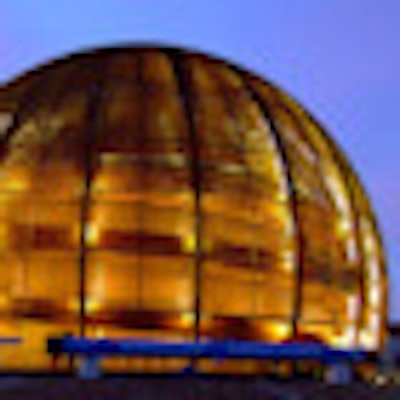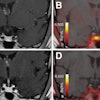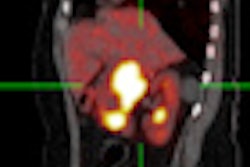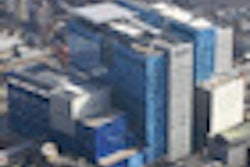
CERN, the European Organization for Nuclear Research, is renowned for its pioneering research in fundamental physics -- investigating the origins of the universe and how it works. Some of its tools, such as particle accelerators and advanced detectors, also play an invaluable role in diagnostic and therapeutic medicine.
The International Conference on Translation Research in Radiology and Physics for Health (ICTR-PHE) conference in Geneva brought clinicians and physicists together to help transfer the benefits of basic scientific research to medicine.
In an attempt to exploit this connection and foster relationships between physicists and the medical community, CERN established the Physics for Health (PHE) workshop two years ago. The outcome of that initial meeting was a CERN position paper detailing three initiatives covering biomedical research, accelerator design, and radioisotope development. The second PHE conference took place in Geneva, Switzerland, from 26 February to 2 March, this time in collaboration with the established International Conference on Translational Research in Radiation Oncology (ICTR).
 CERN's Globe of Science and Innovation.All images courtesy of CERN.
CERN's Globe of Science and Innovation.All images courtesy of CERN.The conference attracted more than 500 attendees who come together to share ideas, strengthen links, and further explore CERN's role in advancing medical technology. "For medical applications, CERN can bring its experience with accelerators and particle detection, as well as in large-scale computing," said Rolf-Dieter Heuer, PhD, director general of CERN. "Personalized cancer treatment, for example, generates a tremendous amount of data that must be dealt with efficiently and CERN can help."
Perhaps even more significantly, CERN also brings to the table its vast experience in managing international projects and bringing communities together. "One thing CERN does very well is catalyze collaboration," explained Manjit Dosanjh, PhD, coordinator for CERN's European Network for LIGht Ion Hadron Therapy and co-chair of the 2012 ICTR-PHE conference. "This has been demonstrated for physics, and we want to bring this strength to these multidisciplinary efforts where collaborations are not simple."
Work in progress
Work on the three initiatives is now underway, and this year's conference saw researchers share updates on these projects. Daniel Abler, from the Particle Therapy Cancer Research Institute of the University of Oxford in the U.K. and a fellow at CERN, told ICTR-PHE delegates about preliminary studies into the feasibility of using CERN's Low Energy Ion Ring (LEIR) accelerator to provide ion-beams for biomedical experiments.
 Rolf-Dieter Heuer, PhD, director general of CERN since 2009.
Rolf-Dieter Heuer, PhD, director general of CERN since 2009.LEIR is used to accelerate heavy ions for injection into the Large Hadron Collider (LHC). But it only does this for six or seven weeks per year. Considering the fact that the accelerator's energy range is comparable to energies used for hadron therapy, this makes it an attractive proposition for setting up a new cost-effective biomedical research facility. The facility would provide particle beams of different types and energies for use by the international scientific community.
One obvious application of such a resource is radiobiological studies related to particle therapy, such as investigations of the relative biological effectiveness of different ion beams, for example, or determining the carcinogenic potential of low particle doses. Beam requirements for such experiments, said Abler, include delivery of protons, carbon ions, and other light ions up to oxygen, with energies of up to 400 megaelectron volts per nucleon (MeV/n).
Space radiation protection research could also benefit from this type of facility. Potential projects could include investigating relative biological effectiveness for low fluences of high-energy, high-Z particles, to better estimate the excess risks to crew from high-Z radiation. Here, beam requirements also include provision of ions up to iron, with energies up to 10 gigaelectron volts per nucleon (GeV/n).
Further nonradiobiological experiments are also foreseen, such as physics studies of ions beams, and development and testing of detectors and instrumentation for dosimetry.
So how does LEIR match up to these requirements? While the current ion source can, in principle, generate any ion, light ions are difficult to accelerate at present. Installing a second ion source and possibly a new pre-acceleration structure optimized for light ions would allow operation during the Large Hadron Collider fillings and fast switching between species.
Currently, the beam energy is limited by the main power converter. New power supplies could enable beams of up to about 400 MeV/n for a wide range of ions. Other upgrades required include the implementation of a new slow extraction system, as well as installation of beam transport lines to the experimental end-stations. "LEIR can provide ions in the energy range used for treatment, however upgrades are required and new extraction needs to be implemented," Abler concluded.
Advancing accelerators
Another of the projects instigated by the initial PHE workshop involves setting up and coordinating an international collaboration to devise a medical accelerator complex based on the most advanced technologies. This will include development of a compact, reliable accelerator with low capital and running costs, as well as design of the transfer lines and gantries.
The project, PIMMS2, follows on from CERN's PIMMS (Proton-Ion Medical Machine Study) initiative, which developed a synchrotron optimized for treating moving targets with proton and carbon ion beams. The PIMMS1 design is now in use at the Centro Nazionale di Adroterapia Oncologica (CNAO) per trattamendo dei tumori, the Italian hadron therapy project, and will also be employed at the new facility currently being built in Austria by MedAustron.
 Steve Myers, PhD, CERN's director for accelerators and technology, speaking at the ICTR-PHE conference.
Steve Myers, PhD, CERN's director for accelerators and technology, speaking at the ICTR-PHE conference.A call has been sent out for European institutes and laboratories to submit proposals and requirements for the PIMMS2 accelerator design, and a review committee has been set up to evaluate proposals and choose the one to pursue. "CERN's role is not to build future machines for medical applications, but to coordinate and catalyze feasibility studies for future developments of a cost-effective accelerator facility," explained Steve Myers, PhD, CERN's director for accelerators and technology.
Myers also presented details of the third initiative: the creation of a European user facility for production of innovative radioisotopes. The aim here is to identify radionuclides with clear medical utility, but which are not generally available. The project will define standard production methods and specifications for these radionuclides, and create a community of laboratories that can produce them for use in preclinical and clinical research studies.
"The first Physics for Heath workshop was two years ago, with CERN trying to be the catalyzer to bring people together. This year we are ICTR-PHE, and to my knowledge it's the first workshop of this kind," Heuer told medicalphysicsweb. "We are just at the start. One should not expect immediate results from these discussions, but I think you can expect results in the near future. I see this as a seed for the next project."
© IOP Publishing Limited. Republished with permission from medicalphysicsweb, a community website covering fundamental research and emerging technologies in medical imaging and radiation therapy.



















